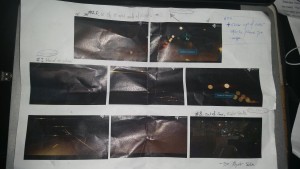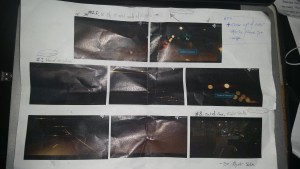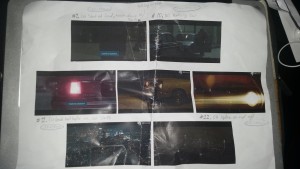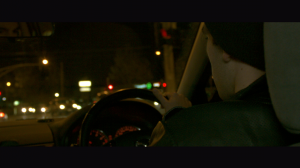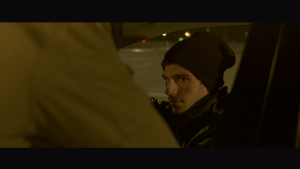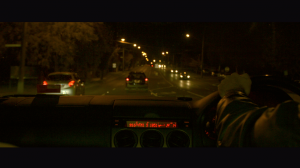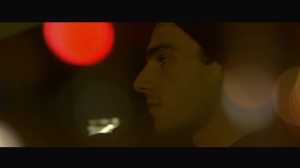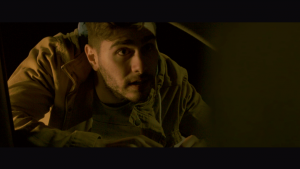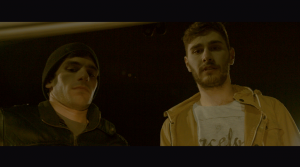Substantial blog post: Entire course and final film experiences
Immediately, upon stepping into the first class of the semester, I was surprised to discover that our initial task for Media 5: ‘The Scene In cinema’ would involve acquiring a camera and deliberating within groups how we interpret the scene from our given script to be covered through cinematography. Not only did I instantly know that this would be a greatly enjoyable class, but additionally an important course that would benefit me as a developing filmmaker. Especially since I have an interest in the technical side of production. Throughout the semester’s perfect concoction of theoretically analytical and practical production work, it allowed me to further my individual research to explore and understand the significance of camera coverage in filmmaking.
Rather instinctively, I was able to realize that there was a progressive structural model in regards to the weekly course work, which I found to be greatly vital towards learning the essential elements of scene construction in cinema. The progressiveness of classes provided, what I refer to as; the creating and reflecting paradigm.These practical class production exercises that Paul designed, allowed us students to get the opportunity to grab a camera, script and to work in groups to collaborate with other individuals to focus on covering a scene that adheres to the weekly constraints which would effectively get more complex and restrictive throughout each week. This ultimately encouraged us to systematically delve deeper into analyzing the complexities and to effectively explore the processes of scene coverage in filmmaking, while we simultaneously developed our technical and creative production skills.
While the practicality of the weekly exercises allowed us to experiment with methods of coverage, framing, scene construction and cinematographic techniques through the experimentation and creation of video content, the weekly reflections encouraged students to dissect, discuss and reflect on the creative processes that justified our decisions we made during the production of our exercises. Thus the course provided me with the perfect blend of creating video content and reflecting upon what I made through written critical analysis.
Not only did my participation in the course work help me to enhance my technical and written knowledge, I effectively used my experiences from each of the weekly group exercise that I took part in, as research that would contribute towards my methology of working. This would assist me to determine what I wanted to create for my self-directed scene, as part of my final assessment task for the semester.
Upon further researching the filmmaking styles of various independent filmmakers such as Harmony Korine and Gaspar Noe, who are known to focus on capturing the realistic depiction of people and places in their filmic work, I had an epiphany, which would form the foundation of the style/ approach I wanted to utilize to construct of my final film. This epiphany influenced my desire to experiment with the notions of traditional filmmaking by simplifying most pre-production processes and organization, to produce a film that was built around the visuals rather than constructing a film around a structured narrative. Additionally, through observing the approach Paul encouraged the class to take when we were given instruction to commence shooting our weekly scenes with a lack of substantial pre-production, I was motivated to investigate whether or not I could replicate my similar class experiences when organizing to shoot an actual short film production with a cast and crew ensemble. This motivation sparked my interest to investigate and explore the possibilities of developing a non-traditional and rather spontaneous style of filmmaking, with an emphasis on capturing realism, to develop a film in the most naturalistic way. Essentially, to (almost) conceive the narrative of the film as the camera rolled, increasing the organic and realistic essence of my entire short film.
Furthermore, through the production of my final film, I intended to explore various technical and creative elements such as; how images can naturally develop a structured narrative, how improvisation effects performance, the dynamics and differences between performances from experienced and first time actors and how to effectively film a scene within the restrictions of shooting in a car and at night.
The only pre-production I undertook for my final film was a series of technical exercises/ experimentations which I would film and reflect upon, in the vein of the course’s weekly assigned tasks. Although it was my aim to conduct minimal pre-production, I was able to remain faithful to this constraint, as these tests where essential towards developing my technical competence, rather than developing narrative structure. Through the practice of these exercises, which I would later analytically write upon in my methods of working blog reflections, it enabled me to enhance my ability to wield the camera within my chosen shooting location for coverage.
I consider my experiences from the production of my final film rather educational, as I was able to gain a new perspective of working within unfamiliar and minimalistic shooting conditions on a proper (by proper, meaning to have the intent to create an actual usable film for screening) production shoot. Unlike majority of the film productions I have been involved in over the years as a freelancer, there was no shooting schedule, screenplay or script breakdowns prepared prior to the film shoot. Instead I was armed with a list of visual storyboards, to inspire the camera coverage and images I wanted to bring to life in the film, from the depths of my mind.
Production Storyboards:
As my focus revolved around creating and maintaining the naturalistic essence of my film, I gave my actors a specific set of instructions and motivational cues that in turn inspired their performances, which I chronologically captured on camera. My aim extended to capturing genuine interaction through real life dialogue and performance. Hence it was important that my influence as the director didn’t impact their interpretation of the roles, to give the impression of genuine interaction in simulated conditions.
Overall, I enjoyed my entire production experience while utilizing my restrictive and non-traditional style of filmmaking, which I had formed for investigation. I particularly found working with a small cast and crew (with a maximum of 4 people being present on set over 2 days of shooting) to be less frustrating than working with a larger crew. As I didn’t create a shooting schedule, we took our time to shoot the film, meaning I didn’t need to worry about having a 1st AD constantly breathing down my neck, pressuring me to hurry up due to time constraints. Consequentially, this enabled more freedom and flexibility to produce all the shots I required for my film.
Despite having the flexibility to shoot whatever I desired without time limitations, the efficiency of the shoot suffered greatly. This was due to the fact that we exceeded the estimated wrap up time by several hours on the both production days. Factors such as the seemingly casual nature of the film production, and the fact that all the cast and crew knew each other prior to the production, created the issue of time wasting, as people quickly got side tracked to begin unrelated conversations, causing us to spend more time on location than I had anticipated. Therefore, this ultimately contributed towards the lack of efficiency on set. I have also comprehended the risks of relying upon improvisational performances. Although I was able to improve my skill as a director through frequent and intense communication with the performers to guide and motivate their performances, I could evidently see how the narrative could have potentially been different if the performers were given a script. Its evident upon playing back the footage in post-production, that if the actors where given a script to recite, it would have strengthened the story of my film and the audience’s understanding of the narrative. However, this would have been at the expense of the heightened naturalistic performances, which I focused on capturing through encouraging improvised acting.
Therefore, my investigation through the non-traditional approach I took when producing my film, has lead me to maintain my belive that pre-production is an essential component for a film’s production. Despite the fact that this production stage can strengthen the economical viability and structure of a film, it also possesses the tendency to eliminate the spontaneity and flexibility when actually on production.
In conclusion, from my semester’s venture in investigating and exploring the significance of camera coverage through practical and theoretical work, it has encouraged me to think critically about what the notions of coverage means to me. The processes that encouraged me to actively participate in production exercises, create video content and reflect upon what I have made, has shaped my understanding of effectively capturing a scene in filmmaking. It enforced my understanding that coverage is far beyond the art of creating aesthetically pleasing shots. It’s far more complex, revolving around the ability to create a relationship between a sequence of images in the scene, to capture cohesion through the lens of the camera.
Shots from final film:

